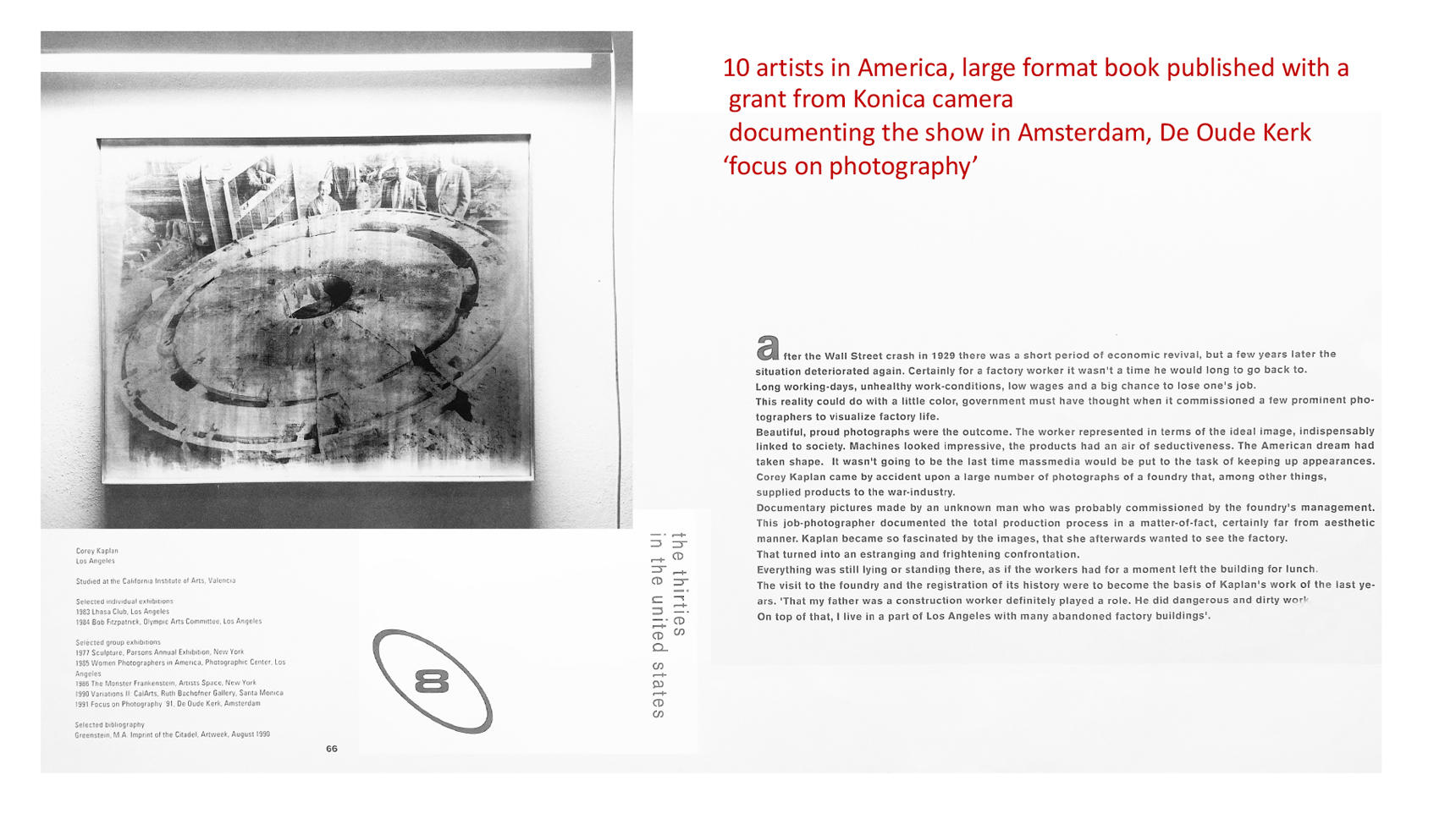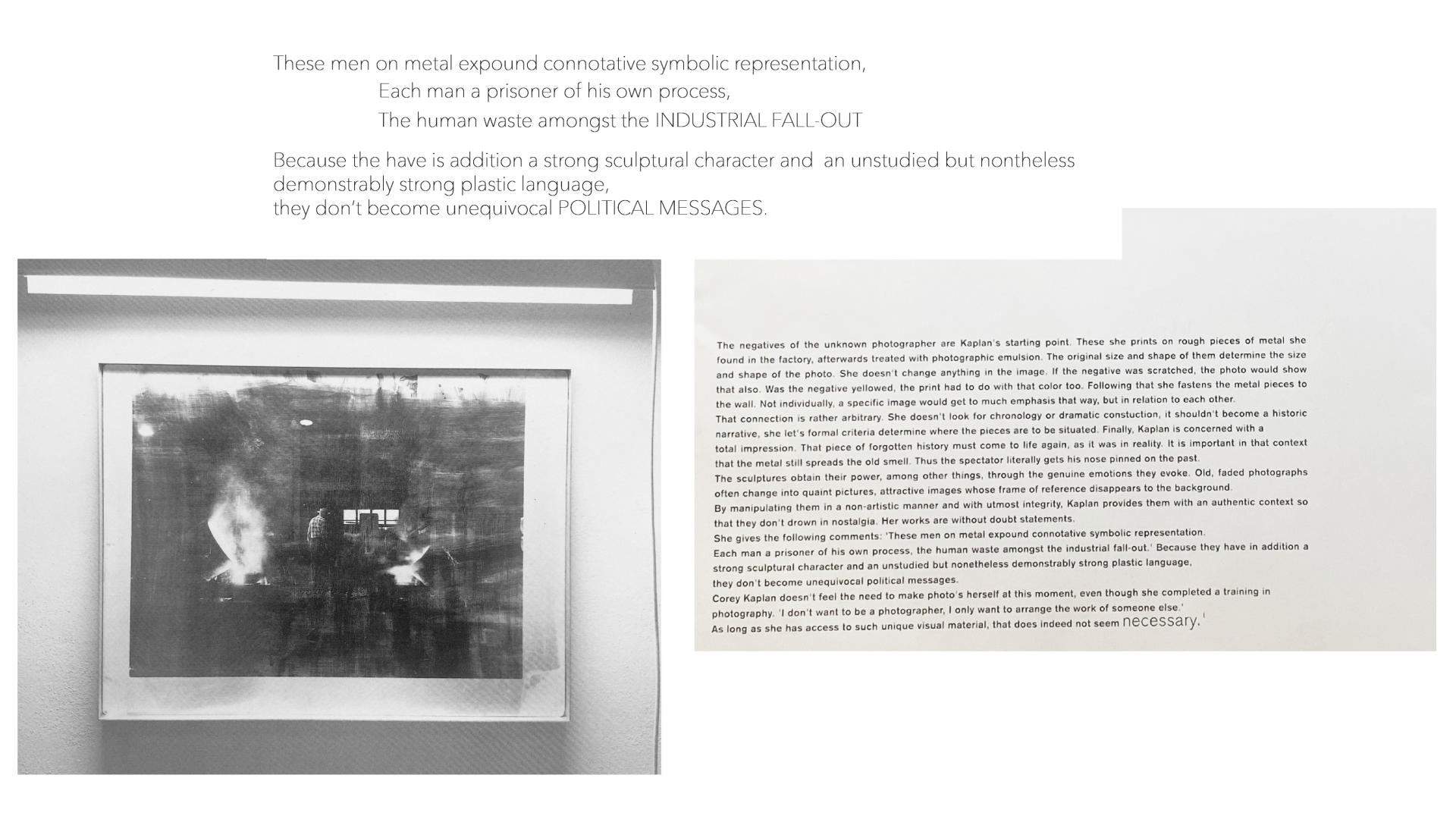REVIEWS & CRITICAL ESSAYS
DEAD and ALIVE
Our greatest fear is death.
On October 29th we recognize the lunacies of life and celebrate casting them away for one evening
OCT 31 marks the beginning of the Celtic New Year in Ireland. A celebration of seasonal change was held on Samhain (Lord of Death) in ancient times. The Romans and the English both celebrated Halloween under different names. For fertility, animals were slaughtered, food and drink shared, and a human was sacrificed. Those with debts were paid, while those with guilt were hanged. This was considered the devil's party in the 1500s. Following the separation of the English church from the Vatican, All Saints Day became a papal holiday. It was associated with witch trials, brooms, cats, broomsticks, and the devil, in addition to witches, caldrons, and caldrons. With Prankster groups becoming a fashion of the time, the 'trick' part of the phrase became more prevalent. Grulacks, dressed in exotic costumes, would invade people's homes and perform at their request in the Shetland Islands. They received candy and food in exchange for their work. The ‘treat’ part of ’Trick or Treat’ was based on London surviving a plot to blow up the House of Lords. Kids dressed in rags and smeared soot on their faces, acting as victims of the explosion, traveling from house to house asking for offerings.
A potato famine devastated the Scottish and Irish economies in the mid-1800s, sending millions of immigrants to the United States. It is believed that settlers from several countries brought Halloween to America. Halloween has been celebrated for decades without knowledge of its historical significance.
After I moved to LA, I wanted to experience Halloween in Hollywood. I brought the only cameras I had at the time. I photographed protestors from El Salvador wearing sheets like ghosts with blood splatters. Next to them were drug dealers wearing masks on the street with the children trick-or-treaters. The interaction from stranger-to-stranger touched me at a cerebral level. More than documentary photography, the sociological references from ‘street goers’ create a body of photographs representing a communal consciousness of the Gen X, Y, Z’ers. This is an interpretation of Steichen’s ‘Family of Man’ through the evolution of the photographer as artist, Historian.
I committed to this as a lifetime project and created guidelines for using the same cameras for as long as they last. A plastic lens 127 and a used Nikon F (from a war photographer) were and still are my tools.I have been shooting this series for over 40 years, and it is far from finished.

Through the Years: Images of a Hollywood Halloween
In her spare time, the production designer on Scandal and the X-Files spends every October 31st photographing Halloween in L.A.
by ELINA SHATKINOCT 10, 2013
Click here to view original article at LAMag.com.

In front of the lens, there are are recognizable scream queens like Jamie Lee Curtis and Debbie Rochon; behind it, there are the people who make all that gore look plausible, or at least entertaining. These days, production designer Corey Kaplan, who offered us tips on getting your house Halloween-ready without a TV show's budget, is working on Scandal, where she makes the ABC drama looks suitably presidential. But her creepy credits include The X-Files, Cold Case, a slew of suspense-filled TV movies, and something called Hollywood Chainsaw Hookers. She's also a talented photographer and a big fan of Halloween.
Kaplan has combined her love of both in a long-running photo project. For the last three decades, she has photographed Halloween in Hollywood - and a few other Los Angeles neighborhoods. Kaplan shares some images from her archives, offering us a glimpse of Halloween through the years.

Through the Years: Images of a Hollywood Halloween
Production designer, Corey Kaplan, has been photographing Halloween in Hollywood (and other L.A. neighborhoods) for more than three decades.
Click here for original article

In front of the lens, there are recognizable scream queens like Jamie Lee Curtis and Debbie Rochon; behind it, there are the people who make all that gore look plausible, or at least entertaining. These days, production designer Corey Kaplan, who offered us tips on getting your house Halloween-ready without a TV show's budget, is working on Scandal, where she makes the ABC drama look suitably presidential. But her creepy credits include The X-Files, Cold Case, and a slew of suspense-filled TV movies, and something called Hollywood Chainsaw Hookers. She's also a talented photographer and a big fan of Halloween.
Kaplan has combined her love of both in a long-running photo project. For the last three decades, she has photographed Halloween in Hollywood - and a few other Los Angeles neighborhoods. Kaplan shares some images from her archives, offering us a glimpse of Halloween through the years.
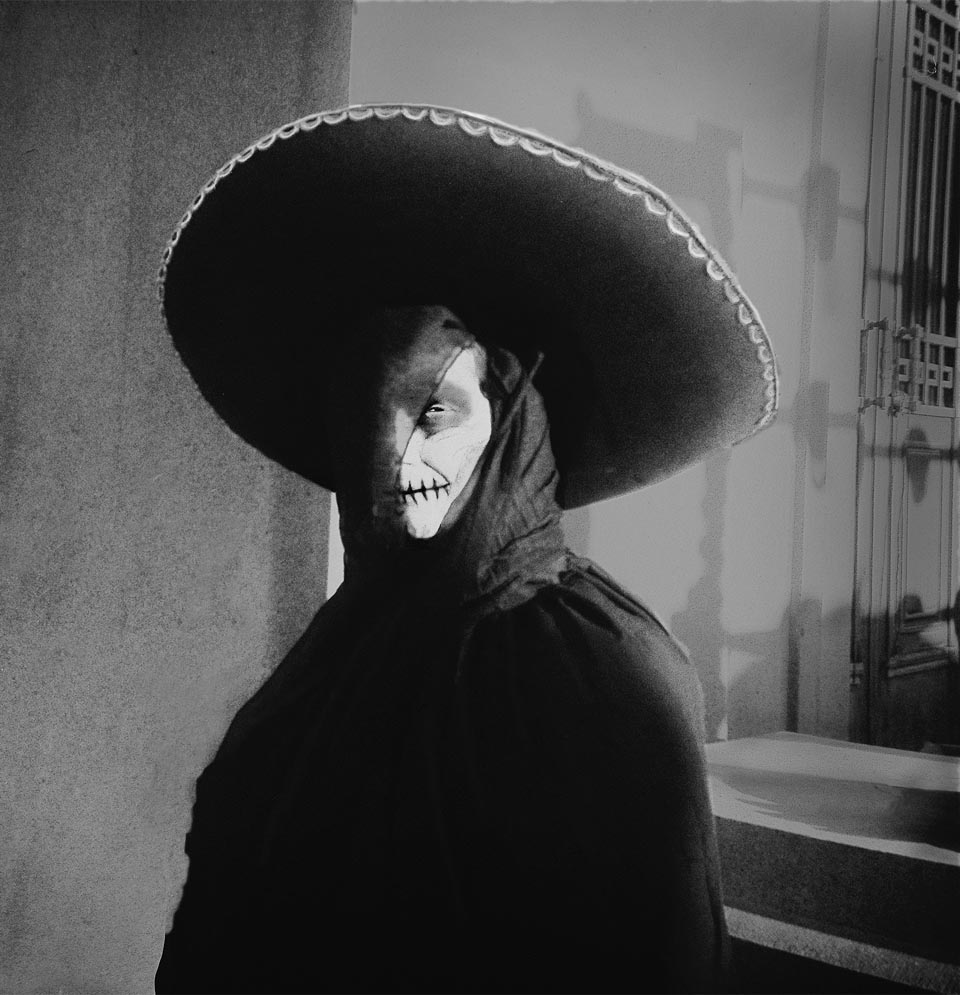
2022, "Dead End, 127 silver halide
Hollywood Forever Graveyard, the celebration of 'Da de Los Muertos' Hollywood Forever Cemetery is a one-block-square, 4-acre site in the heart of Hollywood, adjacent to Paramount Pictures. Most participants at this festival are Los Angelinos. Latinos in American culture have long been stereotyped as illegal aliens, gangbangers, or wetbacks. For the past few decades, the celebration 'Dia De Los Muertos' has helped to create a positive recognition of the Hispanic Cul-ture, Chicano Movement, and Mexican Nationalist throughout the US. Based on celebrations that have occurred for hundreds of years in several Hispanic countries, the celebration 'Da de los Muertos' involves Guatemalans repainting cemetery tombs in vivid colors and holding family picnics on graves. Families wait all night for the visitation of souls. In El Salvador, they leave mementos of the deceased at their graves.
An image of a female skeleton called La Calavera Catrina. La Catrina is an icon that, over the centuries, has inspired women to adorn death with costume and makeup. Many women attire themselves in black and apply face paint to evoke the image of an appealing representation of death-some costume themselves in different personas to redefine a new identity for one evening.

2025 "Hearts and Hands" West Hollywood, 35mm Nikon inferred silver halide
Gay Pride, West Hollywood
Halloween is a holiday in the United States. For our reasons, we have celebrated this holiday without fully understanding its historical significance. It wasn't until the early 1970s that America redefined this carnival.
In New York, the Stonewall Riots of 1969 indirectly led to the Pride Parade in 1970, demonstrating that activism can create change. The Pride Parade is a form of activism to nurture the souls of LGBT, GLAAD, and the Gay, Lesbian, Straight, and Transgender communities. Takin cues from the Pride parade, the West LA carnival started in the 1980s. Halloween Carnival happens in New York. The halloween carnival in West Hollywood, led by the gay community, attracts families, people of all ages, ethnicities, and various religious groups. We are all involved with the dramatics of military men in high heels with plastic machine guns, a male bride in a white veiled gown walking the street with the groom, or Osama bin Laden walking Santa Monica blvd with a three-foot-long missile in his gut. We Ho Halloween gives all participants a role in questioning our culture while carrying forward the joyous and unashamed public display.'

2021, "Sting like a Bee" 127 silver halide
Four Legs Good
On the 1st of the month comes the celebration of the four-legged friends. I started shooting this series as a tribute to owners' love for their pets. I have horses and other four-legged family members; his day of shooting gives me solace. As a documentarian, many affectations are modeled by the pet's master. Being dressed to impress the judge interferes with my ability to see the subject's relationship. I shoot the deceptive image or story created to win the contest. Like the Art world, critics' written interpretation invents or leads to judgment, adding or subtracting value. The perpetuation of beautiful, sexy, and charming women with dogs reimagines what this image means.
They are not set to impress with the image of desire; instead, they display the love between a woman and her pet.
The family creates a diorama story with props and costumes. Kids, unable to hide their feelings, show their pure admiration with their buddies. I don't believe dog owners are unilaterally engaged in displacement, sublimation, or rampant anthropomorphism. This is another standard view: people turn to pets for love and affection, which are so hard to come by in today's fractured world. I think there is a kernel of truth to that -we live in lonely times, and dogs can go a long way toward alleviating loneliness-But I think the more important truth has to do not with modern culture but with dogs themselves and with the remarkable, mysterious, often highly complicated dances that go on between individual dogs and their owners. It's about attachment that's mutual, unambiguous, and it's a kind of connection that is virtually unknowable in human relationships because it's essentially wordless, but clearly available to see in their images.
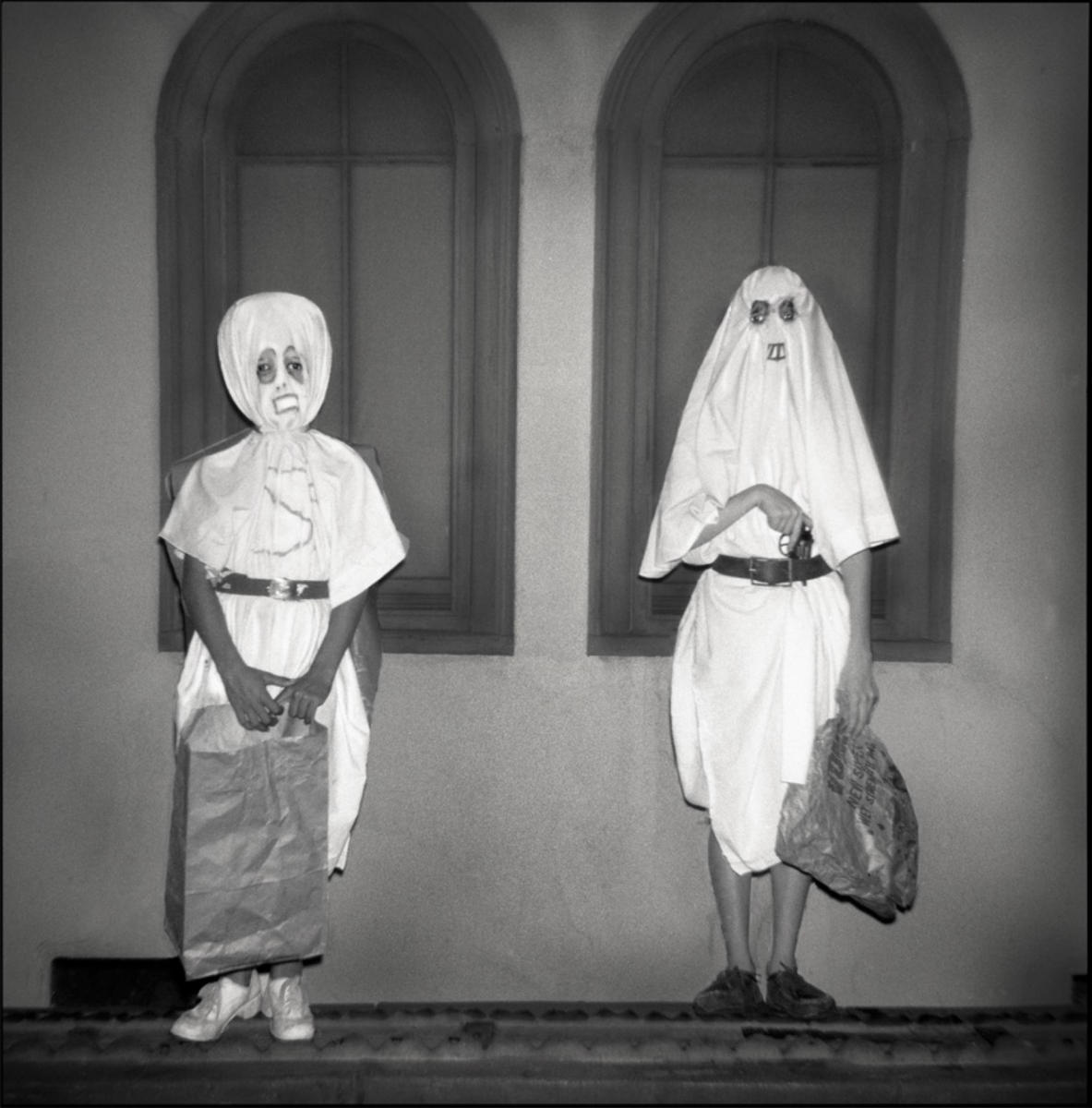
1981 'Ghosts & Guns' 127 Kodak Brownie, silver halide
The collective consciousness of Halloween has a worldwide history In Latin American countries, the living welcome the dead. Several concepts define this celebration.
The Celtics believed that the gate to fairyland opened for mortals on Halloween night. As early as the 15th century, Fairies (gods reduced to small supernatural imps) were reported to visit humans. Humans could then enter the fairy realm and never leave. Western Europe had different reasons to celebrate. In the 1600s, Day. London survived a plot to blow up the House of Lords. People dressed as victims of the explosion with bonfires symbolizing the explosion, Kids dressed in rags with smeared charcoal on their faces. The would celebrate going from house to house offering a performance, (a trick), in exchange for a 'treat
In the mid-1800s, the potato famine led to the emigration of over a million immigrants to America. Settlers from several countries brought beliefs about Halloween. America paid no mind to historical reasons behind Halloween, but continued a celebration. Now redefined, hallowen represents a time that people are united by a shared sense of fun and celebration, regardless of color, age, ethnicity, or sexual orientation. People portray news stories, poli-tics, current events, musicians, or anything that suggests enforced or suggested beliefs. Halloween has prankster participants, sexual enticers, artists mimicking rockstars, and killers from past horror movies, the devil, etc. The people are trick, their delivery is treat.

2025, "Thr Great Mother 35, Nikon, silver halide
My participation as a photographer
on Halloween with cameras, I join in the festivities. With respect to the techniques of amateur photography, I use 127 film of various stocks and AG-1B flash bulbs with my Starlite, Kodak Brownie, and Flash-O-Set cameras. I also use my 35mm Nikon F, with black and white or infrared film. I have four cameras on my body while shoot-ing. Someone in the Halloween crowd thought I was dressed to be the deceased photographer, 'Diane Arbus. I felt honored.
The people that I shoot are passing by, and I have seconds to catch a shot. 'Dead and Alive' is anti-F-64 photog-raphy. No part of this process is precious or precise. The series I shoot is 'by the people, for the people, and of the people. Working with old cameras and film, every image is a chance of luck.
Robert Frank's stunning documentary book, The Americans, and Larry Clark's work in 'Tulsa' were early influ-ences. As an artist, instead of creating the image, I chose to capture the image as art in motion.
Technology gave me the ability to expand my vision. With later images, I had the option to use Photoshop to isolate my subject and selectively add or remove surrounding elements, marking a significant technical progression in the series. Other images from newspapers and paintings have been used alongside my pictures to create a duality of composition. I have used Al to create backgrounds for my subject.
Publication
The Thirties in the United States
"Disk & Men"
Corey Kaplan, Los Angeles
Studied at the California Institute of Arts, Valencia
10 Artists in America large format book published with a grant from Konica camera documenting the show in Amsterdam, De Oude Kerk, 'focus on photography'.
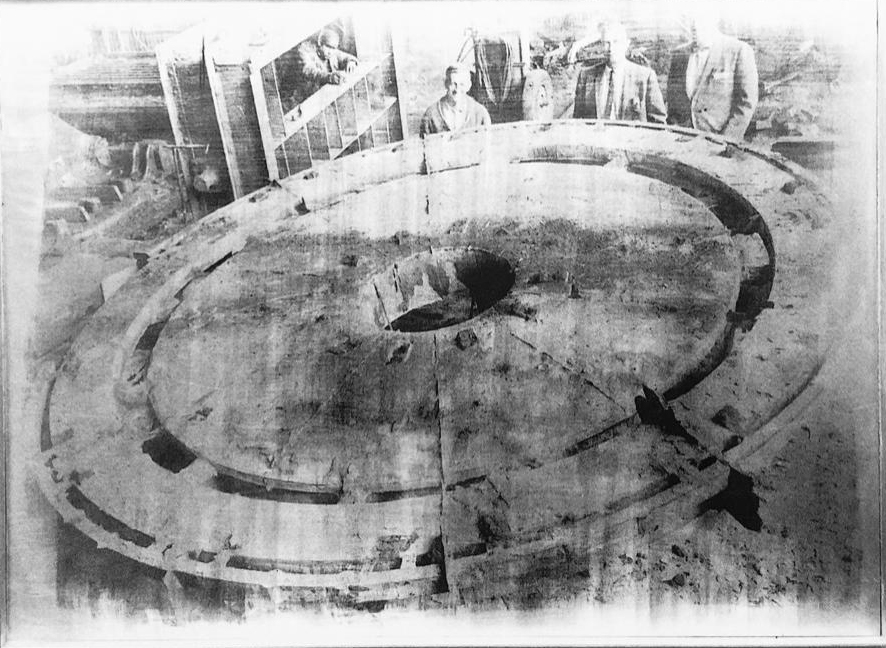
Beautiful, proud photographs were the outcome. The worker represented in terms of the ideal image, indispensably linked to society. Machines looked impressive, the products had an air of seductiveness. The American dream had taken shape. It wasn't going to be the last time mass media would be put to the task of keeping up appearances.
Corey Kaplan came by accident upon a large number or photographs of a foundry that, among other things, supplied products to the war industry.
Documentary pictures made by an unknown man who was probably commissioned by the foundry's management. This job-photographer documented the total production process in a matter-of-fact, certainly tar rom aesthetic manner. Kaplan became so fascinated by the images, that she afterwards wanted to see the factory.
That turned into an estranging and frightening confrontation.
Everything was still lying or standing there, as if the workers had for a moment left the building for lunch.
The visit to the foundry and the registration of its history were to become the oasis or Kaplan's work of the last years.'That my father was a construction worker definitely played a role. He did dangerous and dirty work. On top of that I live in a part of Los Angeles with many abandoned factory buildings'.
Because what they have in addition to a strong sculptural character and an unstudied but nontheless demonstrably strong plastic language, they don't become unequivocal POLITICAL MESSAGES
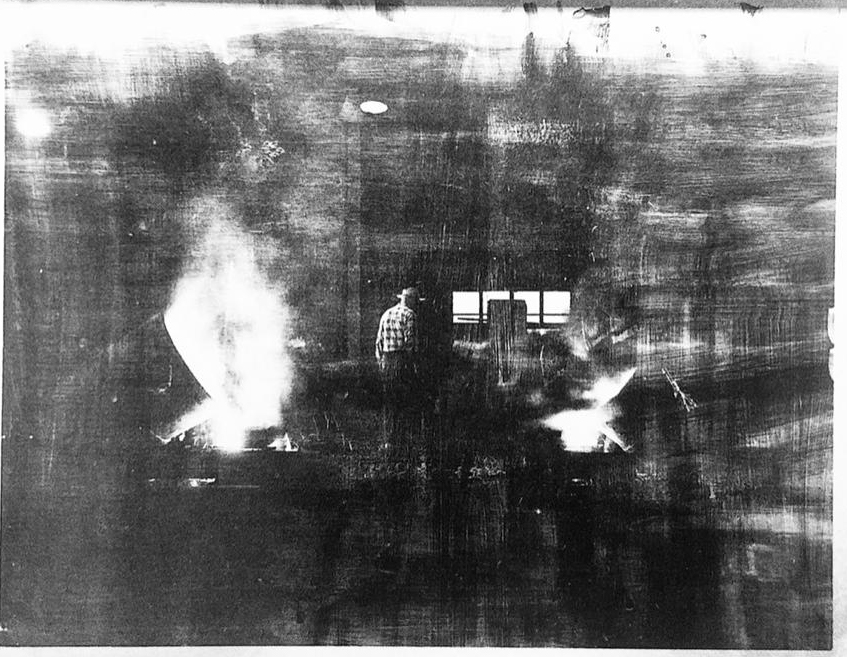
The negatives of the unknown photographer are Kaplan's starting point. These she prints on rough pieces of metal she found in the factory, afterwards treated with photographic emulsion. The original size and shape of them determine the size and shape of the photo. She doesn't change anything in the image. If the negative was scratched the photo would show that also. Was the negative yellowed the print had lo do with that color too. Following that she fastens the metal pieces to the wall. Not individually a specific image would get to much emphasis that way, but in relation to each other That connection is rather arbitrary. She doesn't look for chronology or dramatic construction, it shouldn't become a historic narrative. she let's formal criteria determine where the pieces are to be situated Finally. Kaplan is concerned with a total impression. That piece of forgotten history must come to life again, as it was in reality. It is important in that context!
that the metal still spreads the old smell Thus the spectator literally gets his nose pinned on the past.
The sculptures obtain their power. among other things, through the genuine emotions they evoke. Old, faded photographs often change into quaintp. attractive images whose frame of reference disappears to the background By manipulating them in a non-artistic manner and with utmost integrity. Kaplan provides them with an authentic context so that they don't drown in nostalgia. Her works are without doubt statements.
She gives the following comments: 'These men on metal expound connotative symbolic representation
Each man a prisoner of his own process. the human waste amongst the industrial fall-out. Because they have in addition
strong sculptural character and an unstudied but nonetheless demonstrably strong plastic language they don' become unequivocal political messages.
Corey Kaplan doesn't feel the need to make photo's herself al this moment. even though she completed a training in photography. I don't want to be a photographer. I only want to arrange the work of someone else.
As long as she has access to such unique visual material, that does indeed not seem necessary.
